Raindrops patter on the water’s surface, creating ripples of intrigue for avid anglers. The age-old question lingers: Is fishing good after rain? In this comprehensive guide, we navigate the post-rain fishing landscape, exploring the science behind fish behavior, the impact of rain on oxygen levels, and the allure of water coloration.
Discover how you can leverage this unique window of opportunity to reel in a rewarding catch. Join us as we unveil the secrets to post-rain fishing success, turning the elements in your favor and transforming a drizzle into a downpour of angling achievement
jump to a specific section
- 1 What Weather is Ideal for Fishing?
- 2 Oxygen Levels and Water Coloration
- 3 Influence on Fish Behavior
- 4 he Perfect Fishing Weather
- 5 Rain’s Oxygenation Magic
- 6 The Art of Water Coloration
- 7 A Symphony of Change
- 8 the Art of Catching Fish After Heavy Rain
- 9 Advantages of Post-Rain Fishing:
- 10 Challenges of Post-Rain Fishing:
- 11 Pro Tips for Success
- 12 Unveiling the Mystery
- 13 Rain as a Stimulant:
- 14 Fish Behavior
- 15 Species-Specific Responses
- 16 Decoding the Barometric Pressure Puzzle
- 17 The Barometric Pressure Dance
- 18 High Pressure Systems
- 19 Low Pressure Systems
- 20 Strategies for Anglers
- 21 Final verdict
What Weather is Ideal for Fishing?
When it comes to fishing, weather conditions play a significant role in determining the success of your angling adventure. While the image of clear blue skies and calm waters may be the first that comes to mind, the influence of rain on fishing is often underestimated. Rain,
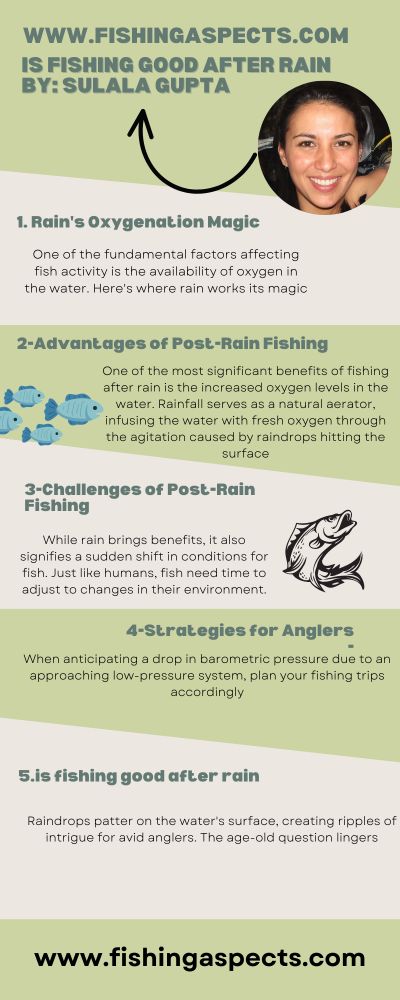
typically seen as a hindrance, can actually trigger a chain reaction of positive effects that enhance fish behavior and increase the chances of a rewarding catch.
Oxygen Levels and Water Coloration
One of the essential factors for fish survival and activity is the availability of oxygen in the water. Rainfall serves as a natural aerator, replenishing oxygen levels in lakes, rivers, and ponds. As raindrops hit the surface of the water, they create ripples that help mix the upper and lower layers.
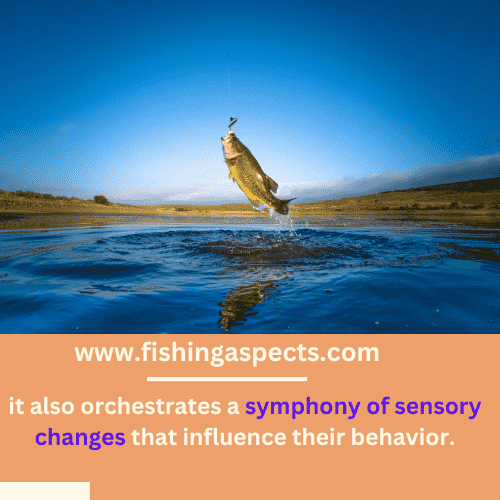
- This mixing action promotes the diffusion of oxygen from the air into the water, creating a more oxygen-rich environment that invigorates fish.
- Rainwater also plays a role in water coloration. You might have noticed that after a rainfall, water often appears slightly murkier or stained. This change in color is due to the runoff from the land, carrying with it dissolved organic matter and nutrients. While this might seem unfavorable to anglers seeking clear waters, this coloration can actually work to your advantage.
- Fish, particularly predatory species, tend to associate stained water with better hunting conditions. The slightly reduced visibility can give them an advantage in ambushing prey, making them more active and receptive to feeding.
Influence on Fish Behavior
The effects of rain on fish behavior go beyond just increased oxygen and altered water color. Fish are highly attuned to their environment, and rain triggers a series of reactions in their behavior. As rain starts falling, the barometric pressure drops, which fish are sensitive to.
This drop in pressure can trigger fish to become more active and feed more aggressively. Fish sense this pressure change through specialized organs, known as the lateral line system, which allows them to detect even subtle pressure fluctuations.
Additionally, the gentle patter of raindrops on the water’s surface can mimic the sound of insects or small prey falling into the water.
This sound can attract fish to the surface, creating opportunities for anglers using top water lures or flies.
he Perfect Fishing Weather
When it comes to angling, weather is more than just small talk; it’s a critical factor that can make or break your fishing experience. While the traditional image of sunny skies might be the go-to expectation,
there’s an intriguing twist to this tale: rain can actually play an unconventional but remarkably beneficial role in creating the ideal fishing conditions. Let’s delve into the world of fishing weather, explore rain’s surprising influence, and understand how factors like oxygen levels and water coloration can significantly impact fish behavior.
is fishing good after rain
Imagine a serene fishing scene set under a cloudless sky – a warm sun casting its gentle rays on calm waters. While this scenario is undoubtedly picturesque, it’s not the only recipe for a successful fishing trip. In fact, rain, often considered a deterrent,
can introduce a range of positive changes to the aquatic environment that directly impact fish behavior.
Rain’s Oxygenation Magic
One of the fundamental factors affecting fish activity is the availability of oxygen in the water. Here’s where rain works its magic. As raindrops meet the water’s surface, they initiate aeration, which is essentially the process of introducing oxygen into the water.
This newfound oxygen infusion is like a breath of fresh air for fish populations. It stimulates their metabolism, increases their energy levels, and consequently, prompts them to become more active and engage in feeding behaviors.
The Art of Water Coloration
Now, let’s talk about water coloration – the result of rainwater mingling with the aquatic environment. While the thought of slightly stained water might seem less appealing, it’s a phenomenon that fish find quite inviting. The dissolved organic matter and nutrients carried by rainwater subtly tinge the water’s color. Fish, especially predators, interpret this change as an opportunity.
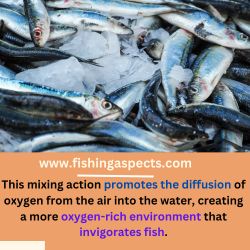
The altered coloration provides them with an advantage when ambushing prey. The slightly reduced visibility allows them to stealthily approach and strike at unsuspecting prey, leading to heightened feeding activity.
A Symphony of Change
Rain doesn’t just impact fish through oxygenation and water coloration; it also orchestrates a symphony of sensory changes that influence their behavior. As rain falls, the barometric pressure undergoes a drop. Fish, equipped with specialized sensory organs that detect pressure fluctuations, interpret this change as a sign of potential food availability.
This drop in pressure triggers a more aggressive feeding response in many fish species, making them more likely to take the bait.
the Art of Catching Fish After Heavy Rain
The aftermath of heavy rain presents a unique opportunity for fishing enthusiasts to reel in an impressive catch. Skilled anglers know that this period can be a golden window for success, thanks to the changes in fish behavior and the altered aquatic environment.
To make the most of these prime conditions, here’s a step-by-step guide detailing the strategies, techniques, and best practices that will help you capitalize on the bounty of post-rain fishing.
| Step 1: Timing is Key | Step 2: Opt for Natural Colors |
|---|---|
| As the rain subsides, head out quickly. | Choose lures that mimic local prey. |
| Fish are active and eager to feed. | Opt for natural-colored lures resembling baitfish/insects. |
| Take advantage of their heightened appetite. | Blend seamlessly into the post-rain environment. |
| Step 3: Explore Shallow Waters | Step 4: Vary Your Retrieval Speed |
|---|---|
| Shallow waters warm up faster post-rain. | Adjust retrieval speed based on fish behavior. |
| Fish gather in shallower regions for warmth and prey. | Begin with slow and steady; vary if not getting bites. |
| Target underwater structures, vegetation, and cover. | Experiment with faster/erratic retrieves for reactions. |
| Step 5: Consider Topwater Lures | Step 6: Be Patient and Persistent |
|---|---|
| Use topwater lures imitating struggling insects. | Fish need time to adjust to new conditions. |
| Raindrops mimic prey sounds, attracting fish. | Stay committed and patient for active feeding. |
| Ripples from raindrops can also lure fish to surface. | Persistence pays off in yielding a rewarding catch. |
| Step 7: Keep Safety in Mind |
|---|
| Focus on fish but prioritize personal safety. |
| Be cautious of water level changes and currents. |
| Wear appropriate gear for comfort and protection. |
Weighing the Pros and Cons of Post-Rain Fishing
Fishing after rain presents a dynamic scenario that can yield both favorable outcomes and unexpected challenges. As an angler, it’s crucial to understand the nuances of post-rain fishing to make the most of this unique opportunity.
Let’s explore the advantages and disadvantages of fishing after rain, delving into the benefits of improved oxygenation and water coloration, as well as the hurdles fish encounter when adapting to abrupt weather changes.
Advantages of Post-Rain Fishing:
- Enhanced Oxygenation:
- One of the most significant benefits of fishing after rain is the increased oxygen levels in the water. Rainfall serves as a natural aerator, infusing the water with fresh oxygen through the agitation caused by raindrops hitting the surface. This oxygen boost stimulates fish metabolism, making them more active andis fishing good after rain
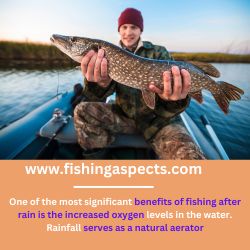
- Altered Water Coloration:
- The slight staining of water due to rainwater runoff carries dissolved organic matter and nutrients. This change in water coloration can work in your favor. Fish, particularly predators, interpret stained water as an indicator of better hunting conditions. They become more confident in their feeding behaviors, increasing your chances of enticing them with various lures.
- Barometric Pressure Influence:
- The drop in barometric pressure that often accompanies rain can trigger increased fish activity. Fish are equipped with sensory organs that detect pressure changes, which prompts them to feed more aggressively. This physiological response can lead to a higher catch rate during the post-rain period.
Challenges of Post-Rain Fishing:
- Adaptation Period: While rain brings benefits, it also signifies a sudden shift in conditions for fish. Just like humans, fish need time to adjust to changes in their environment. The immediate aftermath of heavy rain can lead to a temporary slowdown in fish activity as they acclimate to the altered water conditions.
- Changed Habitat: Heavy rain can impact water levels, causing fish to shift their positions in search of more comfortable spots. This movement might require anglers to adjust their fishing locations accordingly, as fish seek refuge near underwater structures or vegetation.
- Altered Prey Behavior: Rainfall can also affect the behavior of prey species, which in turn influences the behavior of predator fish. Changes in prey movement and distribution might require anglers to tweak their lure presentation and retrieval techniques to is fishing good after rain
Pro Tips for Success
Choose the Right Bait
After rain, fish are attracted to natural baits like worms and insects that have been washed into the water. For artificial lures, use bright colors such as chartreuse or neon to stand out in murky water
Timing is Key
Fishing right after the rain can be highly effective as fish are more active. Overcast conditions are also beneficial as they create a favorable environment for fishing
Select the Proper Equipment
Use heavier fishing gear to handle the increased water flow and potential larger fish. Ensure your hooks are sharp to improve your chances of a successful catch.
Adjust Your Technique
Fish may be closer to the shore or in shallower areas after rain. Use slower retrieval speeds to mimic natural bait movements.
Unveiling the Mystery
The question of whether fish bite after rain has intrigued anglers for generations, sparking debates and discussions around fishing circles. To truly understand this phenomenon,
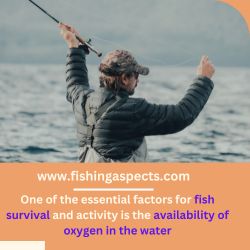
we need to delve into the realm of fish behavior, environmental triggers, and the scientific dynamics that underlie their feeding patterns. Let’s embark on a scientific exploration that uncovers the truth behind this age-old question and sheds light on the relationship between is fishing good after rain
The Rain-Fish Connection
Rainfall is more than just water droplets falling from the sky; it’s a catalyst that triggers a complex dance of interactions between aquatic ecosystems and their inhabitants. The relationship between rain and fish activity is multifaceted, involving a blend of physiological responses and environmental factors.
Oxygenation and Fish Metabolism
One of the critical factors driving fish behavior after rain is the increase in oxygen levels within aquatic environments. Raindrops create ripples upon contact with the water’s surface, leading to the mixing of different layers. is fishing good after rain This natural aeration introduces fresh oxygen into the water, which has a direct impact on fish metabolism. Oxygen is essential for energy production, and its availability influences fish to become more active and responsive to feeding cues.
Pressure Drops and Foraging Behavior
The drop in barometric pressure accompanying rain has a significant influence on fish behavior. Fish are equipped with specialized sensory organs known as the lateral line system,
which detects pressure changes. When the pressure drops, fish interpret it as a sign of potential food availability. This triggers a more aggressive feeding response is fishing good after rain making them more likely to bite.
Rain as a Stimulant:
Raindrops hitting the water’s surface create vibrations and disturbances that mimic the sounds of insects or prey falling into the water. This auditory stimulus can attract fish to the surface, where they believe a potential meal awaits. Anglers who utilize topwater lures capitalize on this behavior, enticing fish to strike.
Scientific Validation
Numerous studies and expert opinions support the notion that fish are more likely to bite after rain. Research has shown that fish, particularly freshwater species, tend to exhibit increased activity levels and feeding behaviors immediately following rain events.
Well-documented sources emphasize the role of oxygenation, pressure changes, and the auditory cues created by raindrops.
Fish Behavior
The behavior of fish is a dynamic interplay of environmental factors, instincts, and survival mechanisms. Rainfall, with its inherent changes in atmospheric conditions and water dynamics, orchestrates a significant shift in fish behavior.
Delving into the nuances of fish behavior before and after rain unveils a fascinating narrative of adaptation, feeding strategies, and species-specific responses. Let’s explore how air pressure changes, cooling effects of rain, and varying fish species contribute to this captivating transformation.
Before Rain
As atmospheric pressure changes precede rain, fish undergo a series of reactions that set the stage for altered behavior. A drop in air pressure – a precursor to impending rain – creates a subtle cue for fish to prepare for a change in weather.
- This anticipatory response triggers an increase in fish activity, particularly among species that sense pressure changes through specialized organs like the lateral line system.
- Before rain arrives, fish such as bass, trout, and pike emerge from their hiding spots. These fish typically seek refuge in shaded areas during sunny days to stay cool and conserve energy. As the air pressure decreases, they become more active and venture out to feed.
- cooling effects of approaching rain also influence their behavior, making them more receptive to hunting prey in the slightly cooler water.
During Rain
Rainfall itself carries a multitude of sensory cues that influence fish behavior. The sound of raindrops hitting the water’s surface mimics the auditory signals of prey falling into the water. Fish, perceiving this as an opportunity for an easy meal, become more inclined to feed near the water’s surface.
This phenomenon is particularly observable when using topwater lures, which exploit fish’s heightened feeding instincts.
The cooling effect of rain during warm weather also has implications for fish activity. As water temperatures drop slightly due to rain, fish experience relief from the sun’s intense heat.
This prompts increased movement, especially among species like shad and bluegills, which emerge from the shadows to feed on the influx of available food stirred up by the rain.
After Rain
The immediate aftermath of rain ushers in a period of adaptation for fish. The sudden change in environmental conditions – from increased oxygenation to altered water coloration – necessitates an adjustment period. Fish behavior tends to slow down after rain as they recalibrate their feeding patterns and adjust to the new circumstances.
Bass, for instance, often hold tightly to underwater structures after rain.
They become more selective in their feeding, targeting only the prey that comes within their immediate vicinity. This behavior reflects their need to conserve energy in the cooler post-rain environment.
Species-Specific Responses
Different fish species respond uniquely to the dynamics of rain. While some species become more active and aggressive in their feeding, others might exhibit more cautious behavior. For instance, trout, known for their sensitivity to water quality changes,
might become more elusive in the immediate aftermath of heavy rain due to water turbidity. Understanding these species-specific responses is crucial for anglers seeking to tailor their strategies to each fish’s behavior.
Decoding the Barometric Pressure Puzzle
Barometric pressure, often referred to as atmospheric pressure, is a powerful yet often overlooked factor that significantly influences fishing outcomes. This invisible force, exerted by the weight of the atmosphere, plays a pivotal role in shaping fish behavior and, consequently, the success of angling expeditions.
In this exploration, we’ll delve into the intricate relationship between barometric pressure and fishing, understanding how fluctuations in pressure levels influence fish behavior and how anglers can leverage this knowledge to optimize their strategies.
The Barometric Pressure Dance
Barometric pressure is commonly measured in units called millibars (mb).is fishing good after rain ? It’s important to note that fish are incredibly sensitive to changes in pressure, both rising and falling. Changes in barometric pressure are often associated with the arrival of weather systems – high-pressure systems (also known as highs) and low-pressure systems (lows).
High Pressure Systems
During high-pressure conditions, the weight of the atmosphere increases, causing the barometric pressure to rise. Under such conditions, fish behavior tends to exhibit specific patterns. Fish often become less active, feeding less frequently and becoming more cautious.
High-pressure systems are often accompanied by clear skies, calm winds, and stable weather. During these periods, fish might retreat to deeper waters or seek cover, making them more challenging to locate and catch.
Low Pressure Systems
Conversely, low-pressure systems are marked by a decrease in atmospheric weight, causing the barometric pressure to drop. These conditions often precede weather changes, including rain or storms. Low-pressure scenarios can trigger a boost in fish activity and appetite.
Fish tend to become more aggressive feeders, sensing the drop in pressure as an opportunity to hunt for food before a potential storm. This makes low-pressure systems a favorable time for angling, as fish are more likely to strike and bite.
Strategies for Anglers
Understanding the influence of barometric pressure allows anglers to tailor their strategies and increase their chances of success:
- Low-Pressure Opportunities: When anticipating a drop in barometric pressure due to an approaching low-pressure system, plan your fishing trips accordingly.
- These periods are excellent opportunities to target active and hungry fish. Use a variety of lures and techniques to capitalize on their heightened feeding behaviors.
- High-Pressure Adaptations: During high-pressure conditions, finesse becomes crucial. is fishing good after rain Opt for more subtle approaches, lighter line weights, and smaller lures. Focus on areas with cover or structure where fish might seek refuge from the bright sunlight.
- Transitional Phases: Pay attention to the transition between high and low-pressure systems. As the pressure shifts, fish behavior might change as well. Fishing during these transitional periods can yield productive results as fish adapt to the evolving conditions.
Final verdict
Barometric pressure is a powerful player in the world of fishing, orchestrating a dance of behaviors that fish exhibit in response to atmospheric shifts. By recognizing the patterns associated with high and low-pressure systems, anglers can optimize their strategies and increase their likelihood of a successful catch. Whether it’s seizing the opportunities presented by low-pressure scenarios or is fishing good after rain employing finesse during high-pressure conditions, understanding the influence of barometric pressure allows anglers to align their tactics with the ever-changing rhythms of nature.